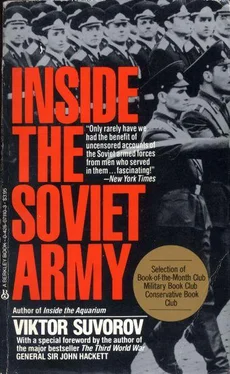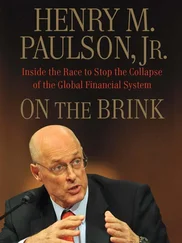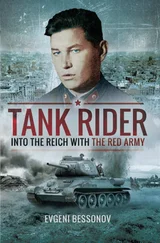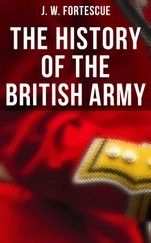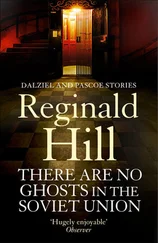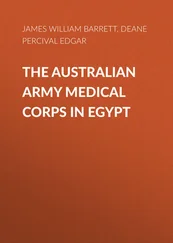The helicopter squadron is used for communications and for control, and sometimes to land troops behind the enemy lines. It has 16 medium and 4 heavy helicopters.
The Army's supporting sub-units include:
An engineer regiment
A pontoon bridge regiment
An independent assault crossing battalion
A transport regiment
An independent pipe-laying battalion
A chemical warfare battalion
A medical battalion
A mobile tank-repair workshop, with a tank recovery company
In wartime the complement of an Army is 83,000. It has 1,541 tanks, 48 rocket launchers, 832 infantry combat vehicles, 1,100 armoured personel carriers, 1,386 guns, mortars and multiple rocket launchers, 376 heavy anti-aircraft missile launchers and anti-aircraft guns, 40 transport helicopters and thousands of light anti-aircraft and anti-tank weapons.
4
A Tank Army, like an All-Arms Army, has a permanent complement which is strictly observed. Its organisation is standardised with that of an All-Arms Army. It is therefore simpler not to list the rocket brigade, the diversionary company and so forth but simply to pick out the features which distinguish a Tank Army from an All-Arms Army. There are three such features:
(1) An All-Arms Army has five divisions, one of which is a tank division. A Tank Army has only four, all of which are tank divisions.
(2) A Tank Army does not break through the enemy's defences. This is done for it by the All-Arms Armies. Therefore a Tank Army does not have an artillery brigade, of which it has no need. But while it is operating deep in the defences of the enemy it may suddenly encounter strong enemy forces against which massed intense fire must be brought down very quickly. For this purpose, in place of an artillery brigade, a Tank Army has a regiment of BM-27 multiple rocket launchers.
(3) A Tank Army does not fight to hold areas or lines: its task is solely to attack the enemy. It therefore has no anti-tank regiment (which holds territory) or independent anti-tank battalion (which harasses the advancing enemy). It has no need of these sub-units, which would contribute nothing to its proper function.
In the near future there will be one further special feature in the organisation of a Tank Army. It will include an air-borne assault brigade, which has the function of seizing and holding bridges, crossing points and road junctions ahead of the avalanche of advancing tanks. At present only Fronts have these brigades. Temporarily, until they come into service, Tank Armies are forced to use motor-rifle regiments, or sometimes divisions, which have battalions with special training in helicopter assault landings. Once the air-borne assault brigades join the Tank Armies, the need for such motor-rifle regiments and divisions will disappear.
In all, in wartime, a Tank Army has 54,000 men, 1,416 tanks, 993 infantry combat vehicles, 894 guns, mortars and multiple rocket launchers, 42 rocket launchers, 314 heavy anti-aircraft missile launchers and anti-aircraft guns, 64 combat and 34 transport helicopters and thousands of light anti-aircraft and anti-tank weapons.
5
If we compare the weapons available to an All-Arms Army with those of a tank Army, we discover an apparently paradoxical situation; the Tank Army has fewer tanks than the All-Arms Army, but more infantry combat vehicles than the latter, whose very foundation is its motor-rifle sub-units!
In fact, though, this is not a paradox. An All-Arms Army is a combination of tanks, of heavy and light motorised infantry, artillery and other forces whose job is to break through the enemy's lines .
A Tank Army is far smaller than an All-Arms Army. It is a combination of tanks and heavy infantry, with artillery and operational helicopter sub-units, whose job it is to operate deep in the enemy's rear .
An All-Arms Army has more than 1,000 armoured personnel carriers (for light infantry) and a Tank Army has practically none.
A Tank Army, being smaller, has far better cross-country performance, and greater manoeuvrability and striking power. It has fewer tanks than an All-Arms Army, but they are far more highly concentrated. This gives the Tank Army a clearly defined offensive character, while the All-Arms Army is essentially a universal weapon.
1
The Front is a group of Armies, unified under a single command to carry out combat operations in wartime. It is set up either during or immediately before the outbreak of a war. It is an all-arms formation in every respect, incorporating elements of the various Armed Services.
The Commander of a Front has an operational, not an administrative function. He possesses very considerable authority and the forces under his command are not subordinate to the Commanders-in-Chief of their respective Services. The different Services from which the forces making up a Front are drawn are not permitted to interfere in the operational use of these forces. A Front Commander has sole and personal responsibility for the preparation, conduct and outcome of combat operations. He is subordinated either to the Commander-in-Chief of a Strategic Direction who is in control of operations or directly to the Supreme Commander himself. The Armed Services from which the forces making up a Front are taken are concerned only with the reinforcement, reequipment, provisioning and supply of these forces.
This clear differentiation between operational and administrative functions makes it possible to concentrate complete authority in individual hands, to avoid duplication of control, to ensure proper cooperation between sub-units of different Armed Services and to avoid friction between them.
At the beginning of the war between the Soviet Union and Germany, five Fronts were created. In the course of the war their number was increased to fifteen. During its final stages the Fronts operating in the Central Direction were made up of 1 or 2 Air Armies, 2 or 3 Tank Armies, 8 or 9 All-Arms Armies and a considerable number of independent tank, artillery and motor-rifle corps. These Fronts had strengths of up to a million soldiers, three thousand tanks, three thousand aircraft, and up to fifteen thousand guns and mortars.
2
After the war, because of the introduction of nuclear weapons and as part of the continuous technical improvement of the Armed Forces, it was decided that in any future war more powerful, more compact and therefore more easily controlled Fronts would be used.
Contrary to the belief held in the West, Fronts have a quite clearly defined combat organisation, like battalions, regiments, divisions and armies.
A Front comprises:
A command staff.
A communications regiment-the nerve system.
A diversionary `SPETSNAZ' brigade, a signals intelligence regiment and a radar battlefield surveillance regiment-the eyes and ears of the Front.
An Air Army.
A Tank Army-the Front's striking force.
Two All-Arms Armies.
An independent tank brigade-the Front Commander's personal guard, which defends his command post and the Front's rocket brigades. This brigade is only brought into action in the most critical situations.
Two rocket brigades. One has 12 launchers with a range of 9–1,200 kilometres and is used in accordance with the plans of the Front Commander. The second brigade is similar in composition and armament to an Army's rocket brigade and is used to strengthen the Army which is having the greatest success.
An artillery division, consisting of six regiments and an anti-tank battalion. Three of the regiments have 54 130mm M46 guns each and two of the remainder have 54 152mm D20 howitzers each. The other regiment has 54 240mm mortars. The artillery division, in its entirety, is used, to strengthen the artillery of the Army which is having the greatest success.
Читать дальше
